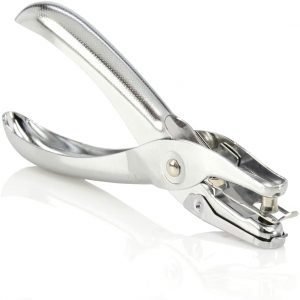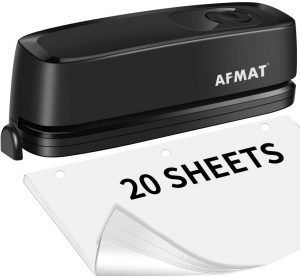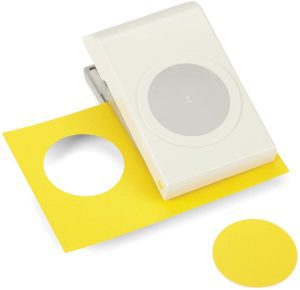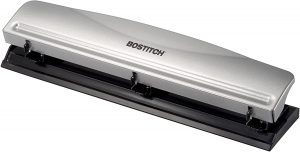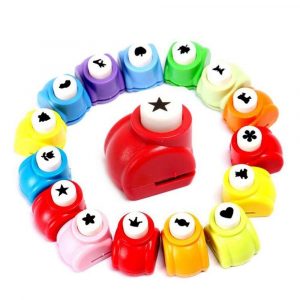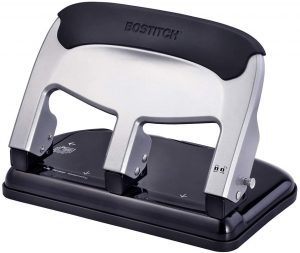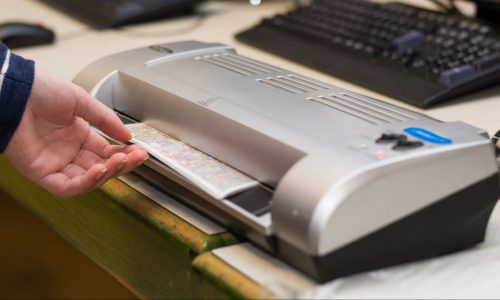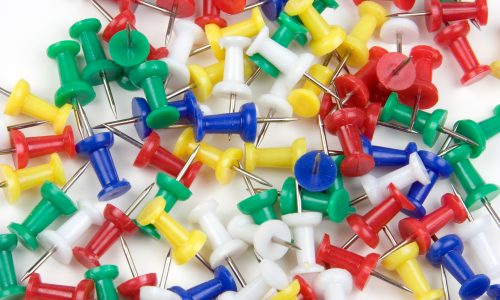The Best Paper Punches
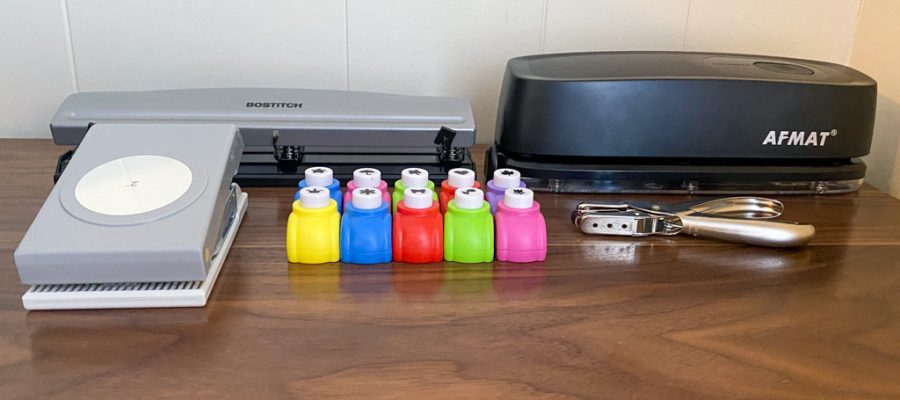
Our Review Process
Don't Waste Your Money is focused on helping you make the best purchasing decision. Our team of experts spends hundreds of hours analyzing, testing, and researching products so you don't have to. Learn more.
Our Picks For The Top Paper Punches
- 1. Swingline Classic 1-Hole 5-Sheet Paper Puncher
- 2. AFMAT Electric 3-Hole 20-Sheet Paper Punch
- 3. EK Tools Jumbo Circle Thumb Paper Punch, 2-Inch
- 4. Bostitch Office Durable 12-Sheet 3-Hole Paper Punch
- 5. LOVEINUSA Patterned Craft Paper Punches, 10-Pack
- 6. BOSTITCH Easy-Squeeze 3-Hole 40-Sheet Paper Punch
If you're in need of a single hole punch, this solid metal option will give you years of reliable use. The slim-handle plier design makes it easy to use even for those who are new to hole-punching. The hinged compartment collects paper shavings and holds them until you're ready to empty them out into a garbage can.
Portable OptionThis lightweight single hole punch is great for sliding into a pocket and taking on the go.
Punch paper effortlessly with this electric hole punch that rests on a desk or tabletop. Each of the three hole punches is made of steel to make sure cuts are precise on up to 20 sheets of paper at a time. To punch, you’ll simply push a button and let the equipment do the rest.
Can Handle Lots of PagesThis desktop paper punch can tackle up to 20 pages at a time to handle all your hole-punching needs.
You can choose from 1-, 1.5- or 2-inch circles with this circle punch, which neatly cuts out circles from sheets of paper. By punching different-sized circles, you can use it for a wide range of art projects and show off your creativity. The punch is made from durable metal surrounded by a sturdy plastic case to give you years of reliable use.
For Arts and CraftsWhether you're launching an arts and crafts project or simply having a little fun, you’ll love this punch, which creates large circles.
With an all-metal design, this slim paper punch can slice through up to 12 sheets of paper capably. The chip tray makes it easy to clean out your paper shavings and the rubber pad provides stability while you're using it. It punches three holes, so you'll also need a one-hole punch on hand if you need to customize your cuts.
Great for Copy RoomsIf your office has a copy room, this slim but effective paper punch is a great tool.
Buying Guide
Hole punches have been important office supplies for decades, but they’re also popular for craft projects. Whether you’re putting together a booklet or designing cards to attach to gifts, the right tools can make all the difference.
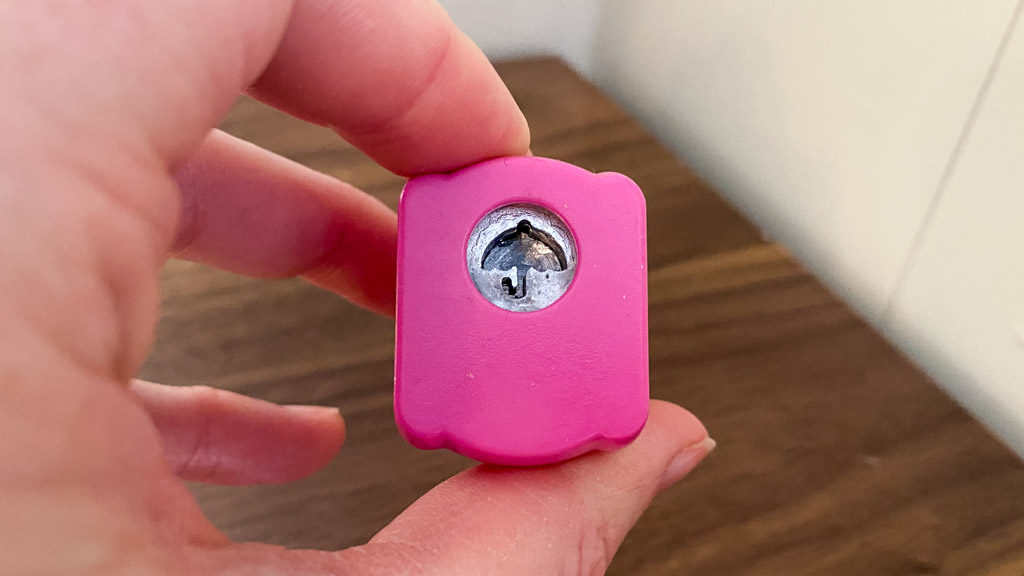
Traditional hole punches come in a few basic varieties. You’ll see the one-handed versions that can punch just one hole. Those have limited capacity and obviously aren’t the best option if you need to bind papers together using three holes. But the big advantage to a one-hole punch is how portable it is. It won’t consume much space in your desk drawer and you can easily carry it in a pocket or tote bag if you need to take it on the go with you.
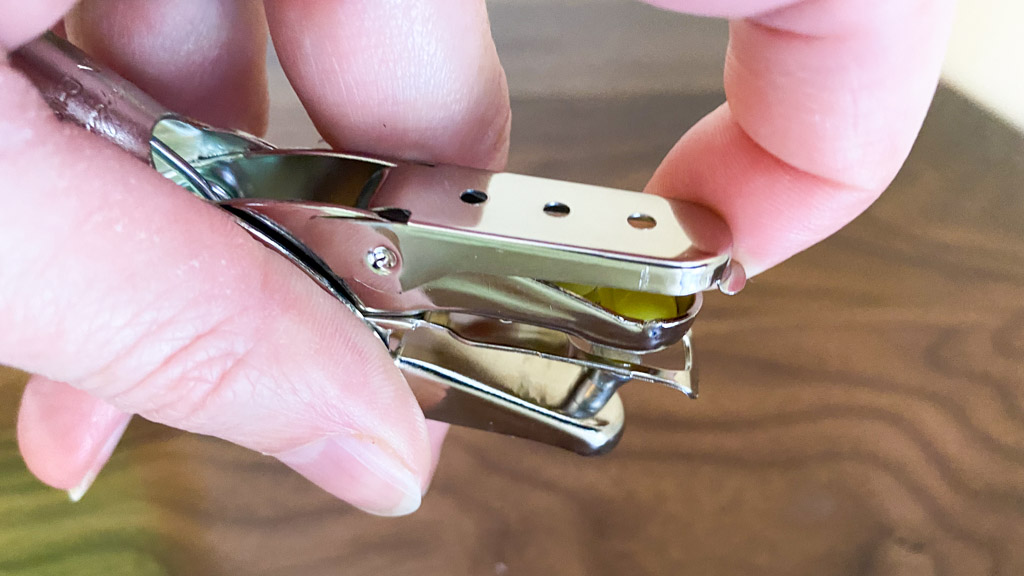
Three-hole punches are typically made to rest on a desktop, but they are more lightweight and portable than they once were. Three-hole punches can have a higher capacity than one-hole punches, easily slicing through up to 10 pieces of paper at once.
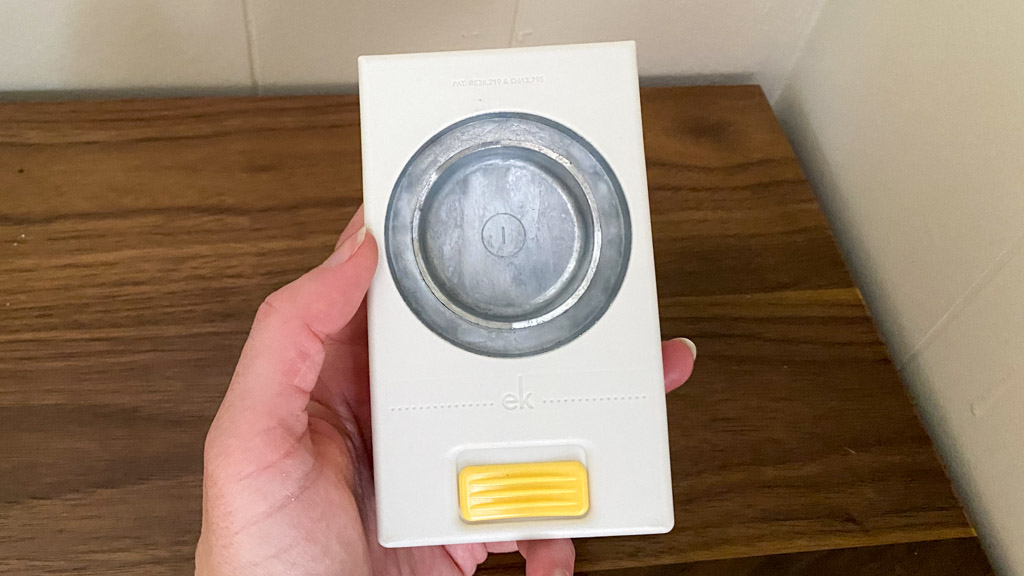
Then there are heavy-duty paper punches. These are designed for tackling more sheets of paper at once, punching three holes into 20 pages or more. These can be tougher to manipulate unless the punch mechanism is sharp, so you’ll need to keep your fingers away from the interior of them. Some are battery-powered, allowing you to simply press a button and let the paper punch slice through the pages.
Lastly, there are the punches that are designed for crafting. These can punch holes in paper or cut out shapes that you can use in your projects. Typically, these paper punches will be found among the supplies of serious crafting hobbyists, including those who scrapbook, journal or make cards through a craft called stamping, giving hole punches new life as many offices strive to reduce paper use.
What to Look For
- Paper punching is all about the blade that slices through the paper. A dull, inefficient blade will mean more work for you. It might even mean you tear through the paper with an unclean cut. It’s important to look for a high-quality metal blade when shopping around for a paper punch.
- Paper punches will inevitably leave scraps of paper lying around. For that reason, manufacturers build a collection bin into most paper punches. Check to make sure your paper punch has one and that it’s easy to empty between uses.
- Electric punches can save you some work. These run on batteries and require you to only press a button to get results. The right electric punch can even handle a larger capacity than what you’d get with a manual option. The downside is you’ll need to keep batteries on hand.
- Typically, when you use a paper punch, you’re creating a hole in the paper to insert something, such as a binder ring or a ribbon. But there are hole punches that serve the opposite purpose. You can create shapes in the paper and then take those shapes and use them for your crafting projects.
- The quality of the punching mechanism isn’t the only thing that matters in a paper punch. The casing also contributes to its longevity. Make sure you choose a punch with a durable covering so that you won’t be buying a new one a few months down the road.
- It may seem like a small consideration when you’re shopping for office supplies, but if your paper punch will be on display, you’ll want to find one that’s visually appealing. You can find paper punches in a variety of colors to make sure you’re getting one that coordinates with your décor.
More to Explore
The hole punch might seem like a classic office staple, but there was a time when it was innovative technology. A patent for a two-hole punch was filed in the late 1800s — at the same time that a patent was filed for the ring binder. Both patents were filed by a German inventor named Friedrich Soennecken.
But Soennecken wasn’t the first to patent a device for punching holes in paper. In fact, the very first patent was issued in 1885 to an American named Benjamin Smith, who came up with a device known at the time as the “conductor’s punch.” Smith’s creation was popular for use in punching tickets, whereas Soennecken’s invention became more closely connected to office supplies. For that reason, it’s no surprise that Soennecken’s patent is often credited as being the first.

